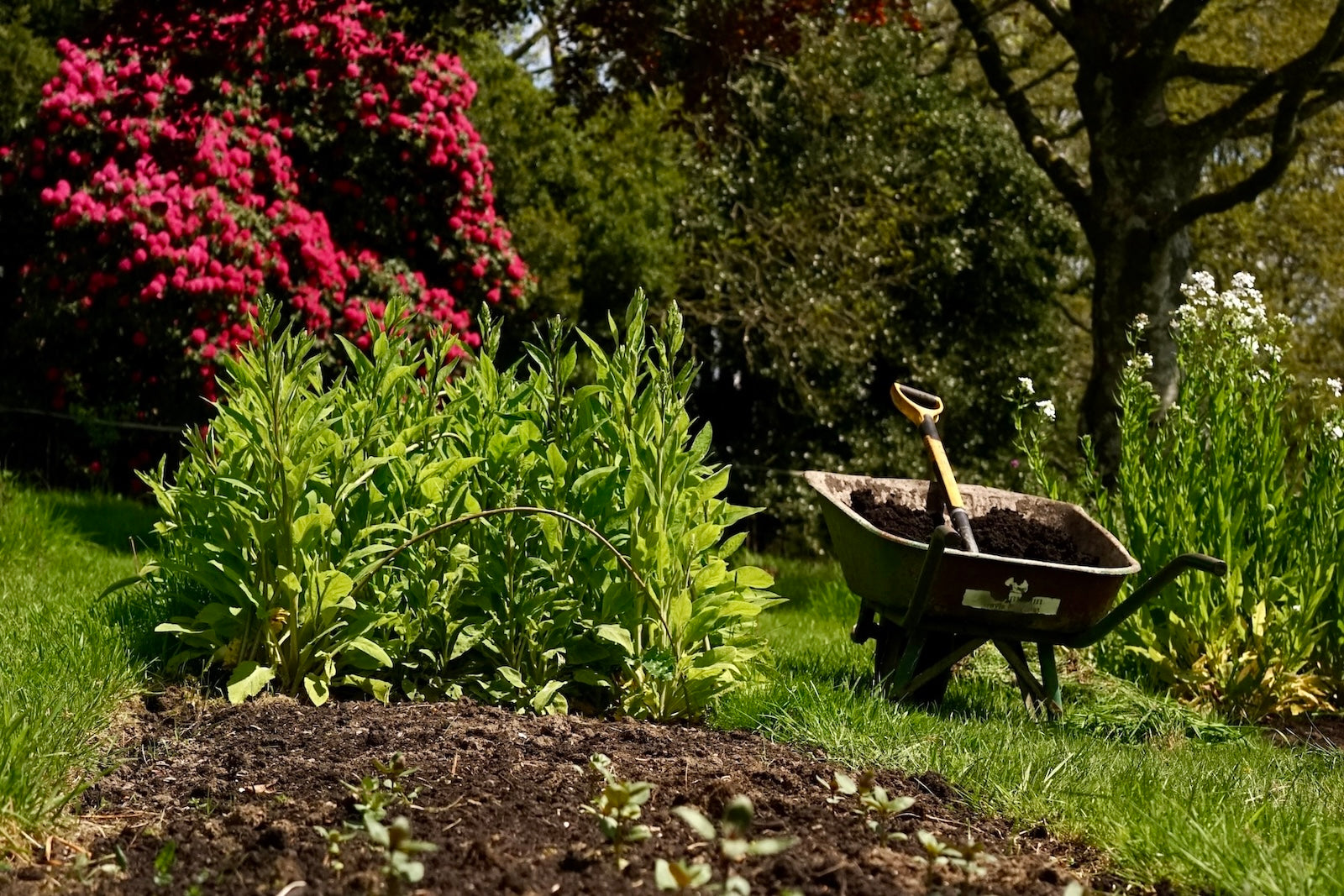Sustainability is a core part of how and why we grow flowers. We want to grow exceptional flowers. But we also want to make sure our farm is an integral and positive part of its environment that plays its part in tackling the climate crisis.
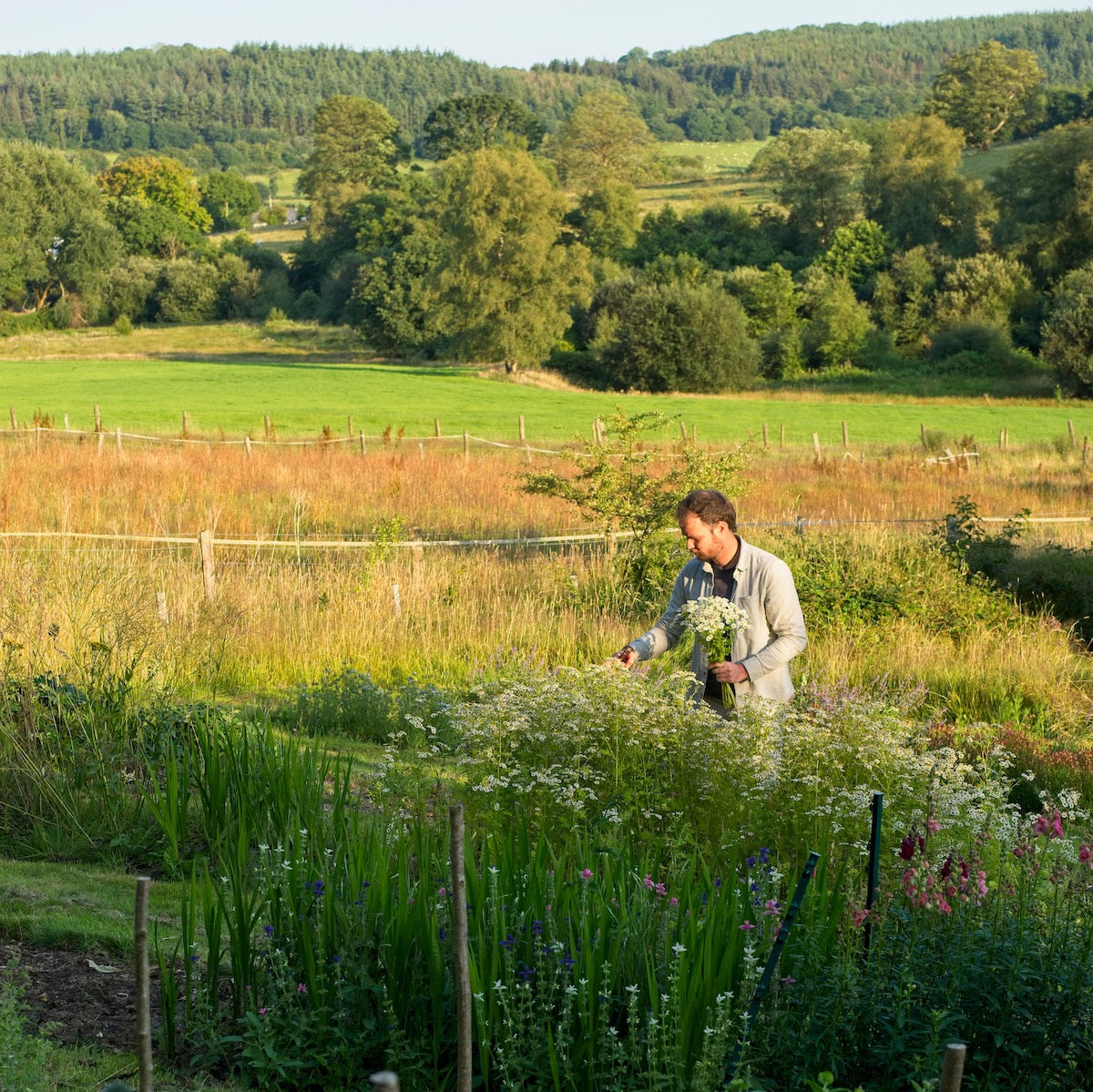
Why did we get into it in the first place?
One big push into growing flowers came from the wonderful Dr Ayana Elizabeth Johnson. She has a method for answering this question. How can you – specifically you – help with climate solutions?
To answer that question, she encourages us all to find the climate action at the intersection of what:
- you are good at
- needs doing
- brings you joy
For us, that is growing local, seasonal flowers.
We like to think we're pretty good at growing flowers. We know the world needs to stop ignoring the carbon cost of the things we buy. And growing flowers brings us So. Much. Joy.
We focus on three things - that if we get right - can be a huge improvement over flowers you might get elsewhere.
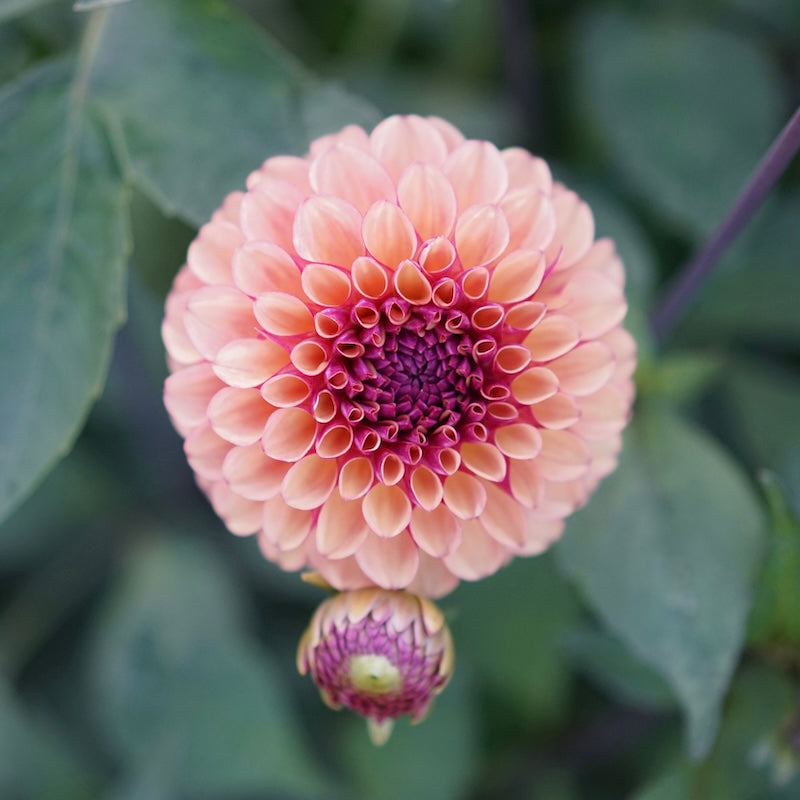
1. Carbon
Flowers can carry a surprisingly high carbon cost. Seasonality plays a big part in this. In his fascinating book "How Bad are Bananas?" Mike Berners-Lee investigates the carbon cost of supermarket flowers. He found that out-of-season cut flowers were some of the highest carbon cost things you can buy in your day-to-day life.
Out of season flowers are either imported from somewhere warm, or grown with added heat and light. If they are grown somewhere warm (in Europe, flowers often come from Kenya) they come in by aeroplane. If they are grown in Europe, they have to be grown indoors with carbon-intensive heat and light.
What we do differently
Our flowers are all grown in their season. We do grow in a polytunnel to extend the season a bit, but never use added heat or light. This means our flowers get to you at a tiny fraction of the carbon cost of supermarket blooms.
We also use solar on the farm and deliver in an electric van (often powered by our own solar). This reduces the carbon cost even further.
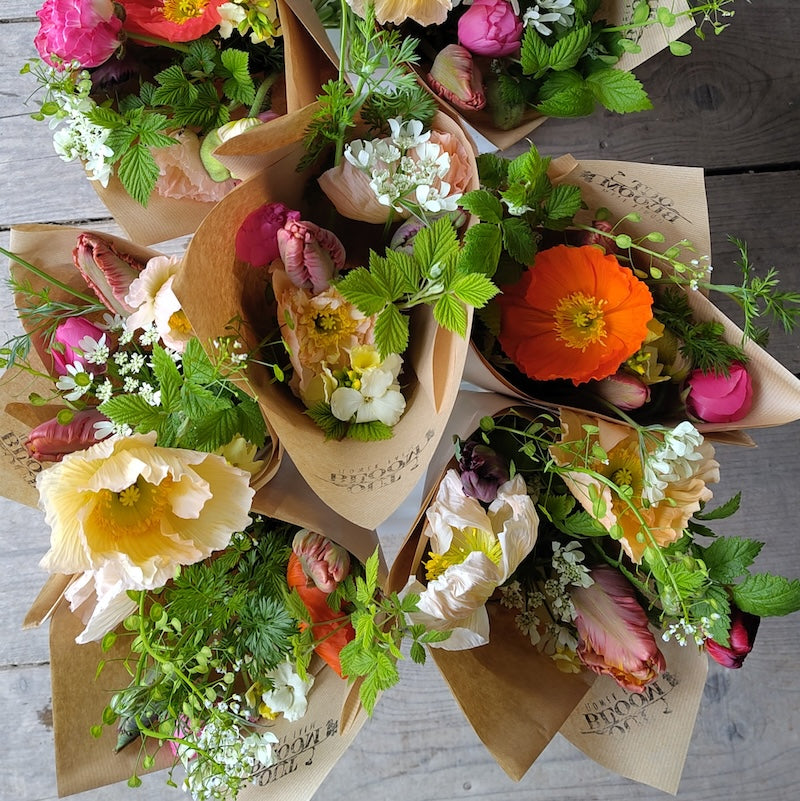
2. Plastic waste
Flowers often go through several rounds of single-use plastic before getting to you. If they then go into floral foam, a single arrangement can produce a huge amount of plastic waste. It's not uncommon for the volume of packaging around the flowers to far exceed the actual flowers.
What we do differently
We only use easily compostable wrapping and never use floral foam in any of our floristry.
We’re always looking for ways to cut plastics out of our growing process, but sometimes have to balance practicality with being completely plastic free.
Some examples of choices we’ve made:
- Most seed starting compost comes in plastic bags, but we’ve managed to source a plastic free option
- We grow our seedlings in plastic module trays because plastic free options like soil blocks are impractical at the scale we grow. However, we only buy long lasting trays that should last 15 years or more
- The polytunnel is probably our biggest single plastic input, but it should also last 10-15 years before needing to be replaced
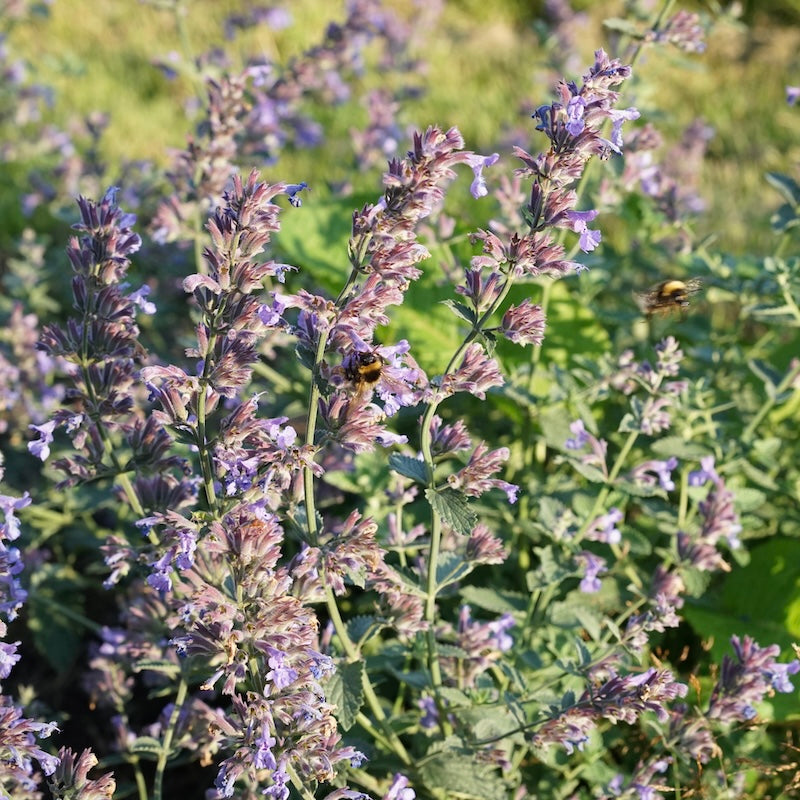
3. Intensive farming
Many commercial flower farms grow intensively and rely on chemical pesticides, herbicides, and fertilisers to operate. They are devoid of much soil, insect, and any other type of life. Many are in parts of the world with lower health and safety standards. This means workers are often exposed to harmful chemicals and working conditions as well.
What we do differently
We prefer to use regenerative farming practices. We try to build up an ecosystem of life that our flowers fit into. We start by building healthy soil that is full of life. This is the foundation for everything else. We add lots of compost and grow cover crops to build fertility. We minimise tilling and digging to allow the soil ecosystem to remain intact. We encourage beneficial insects and predators by providing lots of verges and habitat.
The growing site itself sits in a larger plot that we are managing to be a welcoming place for wildlife to live. We are planting native woodland and are aiming for a mosaic of woodland and species rich meadows. We'd love to be a positive example of a productive farm that is also home to all sorts of other life.
References and resources
There are loads of amazing people working in the carbon/farming/floristry space. These are a few places we learned and pulled information from, and products that we use.
- How bad are bananas? - Book by Mike Berners-Lee
- Sustainable floristry network - Information on plastic waste in floristry
- Regenerative flower farmers network
- Containerwise - Long life plant propagation trays
- Fertile fibre - Plastic-free potting medium
